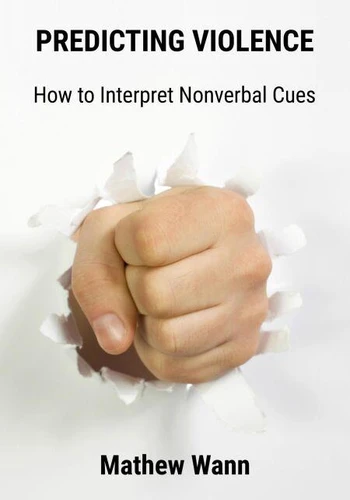Predicting Violence
Par :Formats :
Disponible dans votre compte client Decitre ou Furet du Nord dès validation de votre commande. Le format ePub est :
- Compatible avec une lecture sur My Vivlio (smartphone, tablette, ordinateur)
- Compatible avec une lecture sur liseuses Vivlio
- Pour les liseuses autres que Vivlio, vous devez utiliser le logiciel Adobe Digital Edition. Non compatible avec la lecture sur les liseuses Kindle, Remarkable et Sony
 , qui est-ce ?
, qui est-ce ?Notre partenaire de plateforme de lecture numérique où vous retrouverez l'ensemble de vos ebooks gratuitement
Pour en savoir plus sur nos ebooks, consultez notre aide en ligne ici
- FormatePub
- ISBN978-1-393-57404-0
- EAN9781393574040
- Date de parution11/01/2021
- Protection num.pas de protection
- Infos supplémentairesepub
- ÉditeurRelay Publishing
Résumé
Within our so-called civilised world, the most deplorable of human behaviours is on the rise. Every day, the media reports on violent incidents directed towards our frontline workers - police, paramedics, healthcare providers, security staff, teachers and even retail employees - who risk their own safety in the line of duty. The causes of violence are complex and widely misunderstood. In an effort to help those most at risk of the devastating effects of interpersonal violence, author Mathew Wann has compiled this manual, Predicting Violence: How to Interpret Nonverbal Cues.
In this book, Mathew discusses the importance of recognising the different types of violent behaviours which he groups into four categories. Understanding the origins and background influences underpinning these behaviours, along with learning the skills of situational awareness and how to interpret nonverbal cues from a potential perpetrator, can improve combatants' chance of success when dealing with a violent incident.
The author proposes that to achieve the best outcome, these skills must be honed continually through training programs that simulate real-life scenarios. With an extensive list of references, this book provides an academic framework for its content and, hence, the assurance for readers to trust its practical advice. It may even save a life.
In this book, Mathew discusses the importance of recognising the different types of violent behaviours which he groups into four categories. Understanding the origins and background influences underpinning these behaviours, along with learning the skills of situational awareness and how to interpret nonverbal cues from a potential perpetrator, can improve combatants' chance of success when dealing with a violent incident.
The author proposes that to achieve the best outcome, these skills must be honed continually through training programs that simulate real-life scenarios. With an extensive list of references, this book provides an academic framework for its content and, hence, the assurance for readers to trust its practical advice. It may even save a life.
Within our so-called civilised world, the most deplorable of human behaviours is on the rise. Every day, the media reports on violent incidents directed towards our frontline workers - police, paramedics, healthcare providers, security staff, teachers and even retail employees - who risk their own safety in the line of duty. The causes of violence are complex and widely misunderstood. In an effort to help those most at risk of the devastating effects of interpersonal violence, author Mathew Wann has compiled this manual, Predicting Violence: How to Interpret Nonverbal Cues.
In this book, Mathew discusses the importance of recognising the different types of violent behaviours which he groups into four categories. Understanding the origins and background influences underpinning these behaviours, along with learning the skills of situational awareness and how to interpret nonverbal cues from a potential perpetrator, can improve combatants' chance of success when dealing with a violent incident.
The author proposes that to achieve the best outcome, these skills must be honed continually through training programs that simulate real-life scenarios. With an extensive list of references, this book provides an academic framework for its content and, hence, the assurance for readers to trust its practical advice. It may even save a life.
In this book, Mathew discusses the importance of recognising the different types of violent behaviours which he groups into four categories. Understanding the origins and background influences underpinning these behaviours, along with learning the skills of situational awareness and how to interpret nonverbal cues from a potential perpetrator, can improve combatants' chance of success when dealing with a violent incident.
The author proposes that to achieve the best outcome, these skills must be honed continually through training programs that simulate real-life scenarios. With an extensive list of references, this book provides an academic framework for its content and, hence, the assurance for readers to trust its practical advice. It may even save a life.



